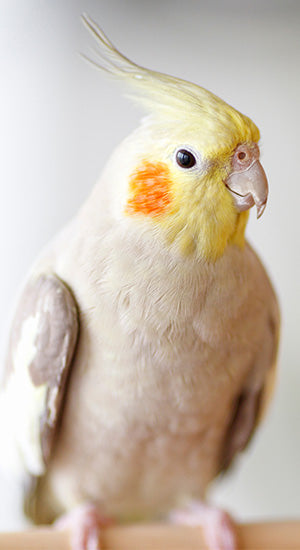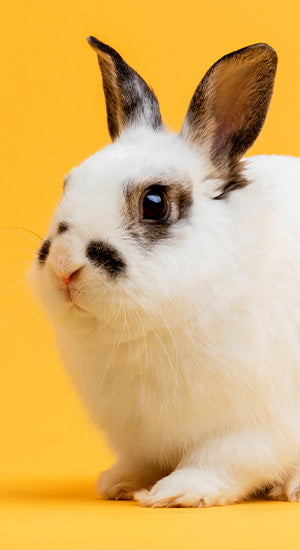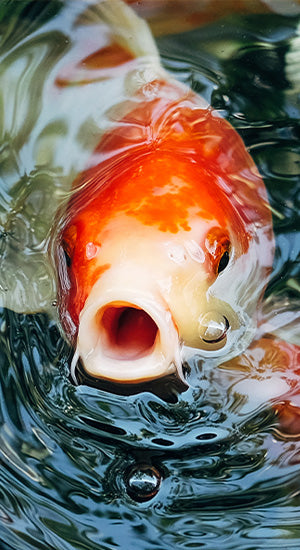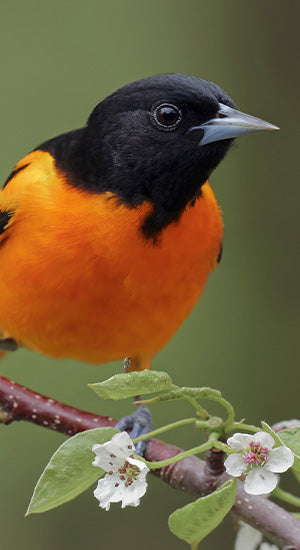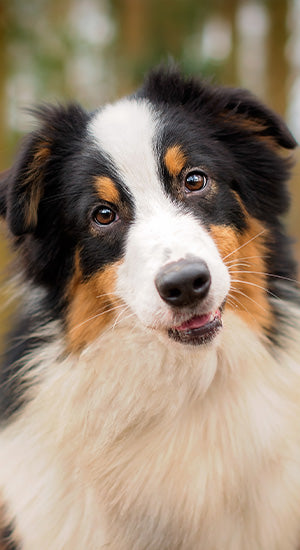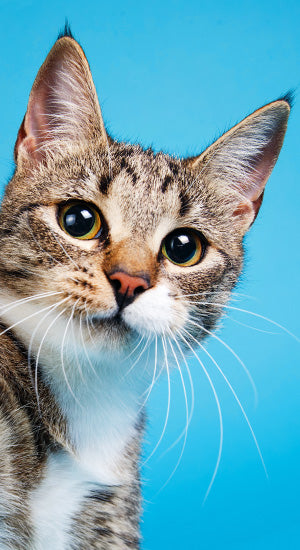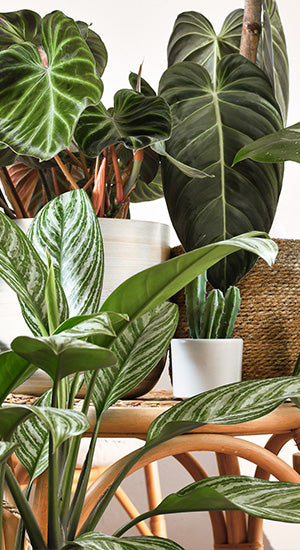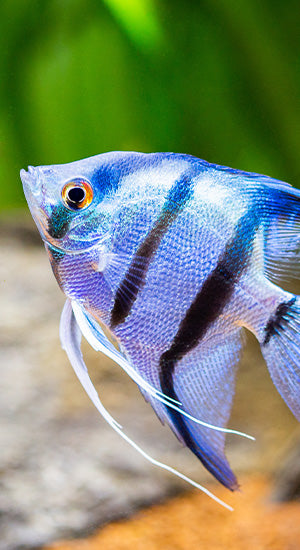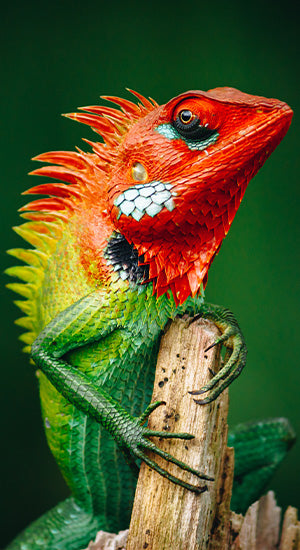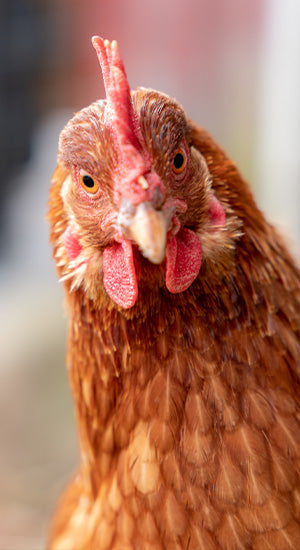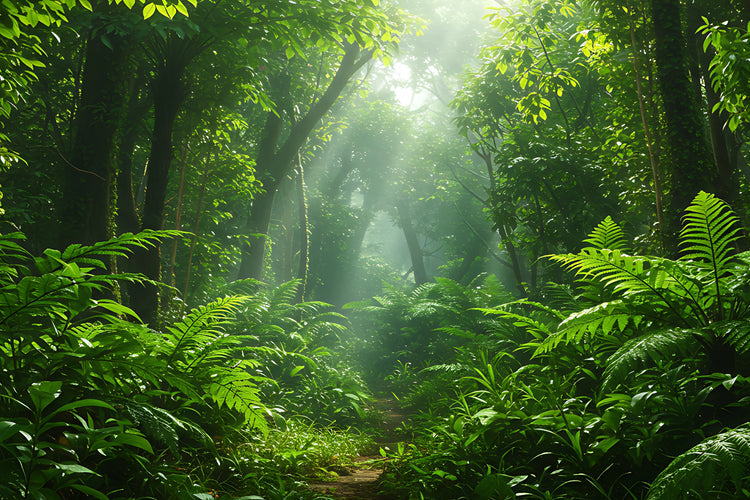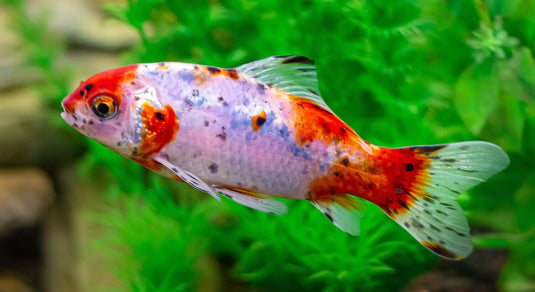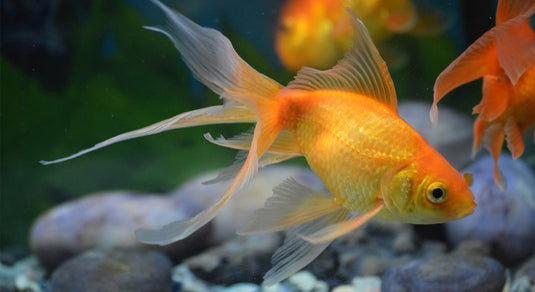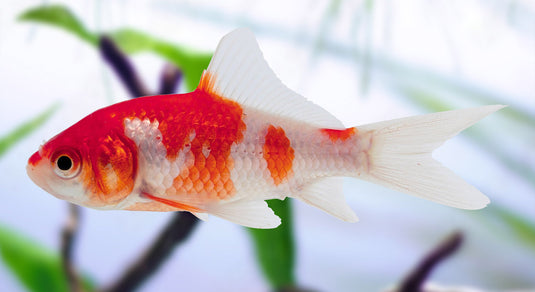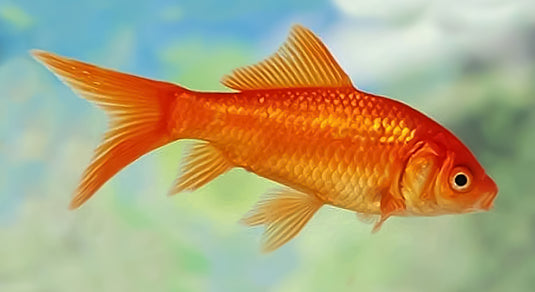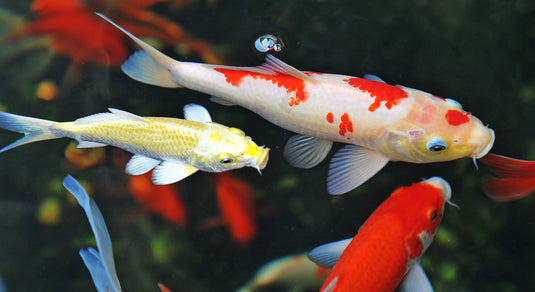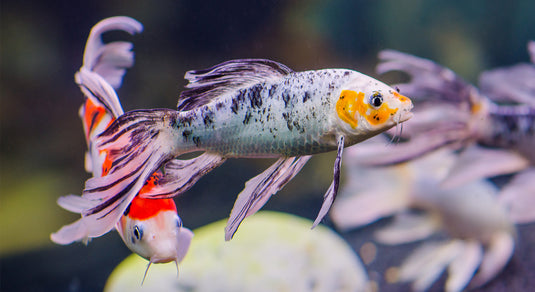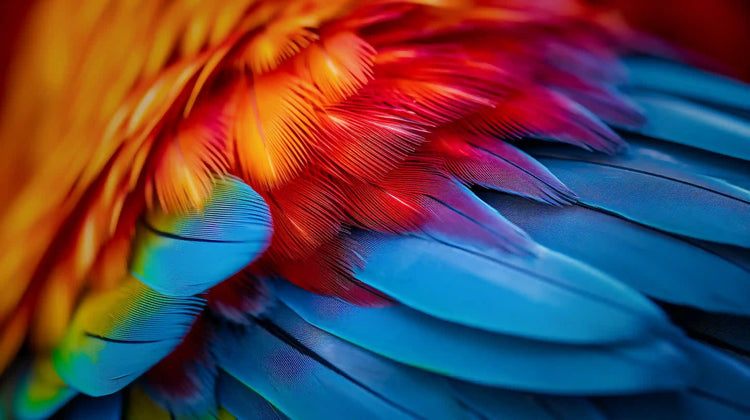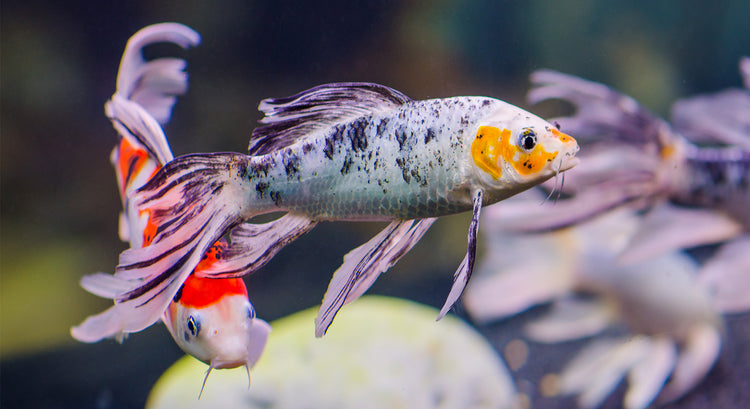
General Information
| Common Name | Butterfly Koi |
| Scientific Name | Cyprinus Carpio |
| Average Lifespan | 30 Years |
Physical Description
A type of ornamental fish notable for their elongated finnage.
Their bodies generally grow quite large, many have long flowing fins, and most have colorful bodies. You can find varieties in black, white, yellow, orange, red, blue, and any combination of the above.
Kohaku are white Koi with red markings. The red markings should be deep in colour and uniform shade with the edges of the pattern well defined. The white should be pure bright white and also free from blemishes.
Sanke have a pure white background and uniform red and black markings. There should be no black markings on the head. The body should have large red markings complimented by an even distribution of smaller black sumi.
Ogon are single colour koi with a metallic sheen. This variety includes standard and scaleless koi. The most popular colours are platinum ogon and yellow ogon. Also included are Matsuba Ogon, which have black colouration in the scales giving the fish a ‘pinecone’ effect.
Utsurimono variety is comprised of 3 different two-colour koi. The Shiro Utsuri (black & white) is the most popular followed by the Hi Utsuri (red & black) and Ki Utsuri (yellow & black). Utsuri are black fish with either red white or yellow makings. Utsuri are sometimes confused with Bekko, however Bekko do not usually have any sumi (black) on the head, or below the lateral line
Asagi and Shusui are the two koi that have blue colouration. Asagi are fully scaled, non metallic, while the Shusui are similar in colour but they are Doitsu (no scales, or with a few rows of enlarged scales). Asagi typically have pale blue scales covering the top half of the body, and rusty red below. The head is preferably white but sometimes tends toward grey.
Koromo is class of koi that includes several varieties such as Goromo & Goshiki, Koromo literally means ‘robed’ in Japanese, which refers to the scales being outlined or ‘robed’ in a darker colour. The most popular is the Ai Goromo which similar to a Kohaku, but the red scales are lined with black.
Tancho is thought of as a pure white fish with a perfectly round red marking on its head, however Tancho Sanke and Tancho Showa are also included in the classification. A perfectly round red pattern is the most sought after, but any symmetrical shape such as a flower or heart shape is acceptable as well.The ideal pattern should be confined to the head and may not touch or extend over the eyes, lips, cheeks, or shoulder. Its position must be in perfect balance to the head
Bekko are similar to Utsuri in that they are two-coloured koi and have 3 colours in the variety, Shiro Bekko (white & black), Aka Bekko (red & black) and Ki Bekko (yellow and Black). They differ from Utsuri because the do not typically have any sumi (black) on the head or below the lateral line.
Hikari Mono are metallic koi with more than 1 colour that do not fit into any other category. They immediately catch the attention of anyone who sees then because of their metallic sheen as well as their contrast in colour. Some of the more popular varieties include Hariwake, Kujaku, Yamatonishiki, Kikusui and Kikokuryu
Kin-gin-rin or commonly referred to as gin-rin koi are koi that have scales that sparkle. These days, basically any variety of koi is available with gin-rin scales, such as Showa, Kohaku, Chagoi, we have even seen some even some Doitsu arriving lately with their mirror /enlarged scales with gin-rin.
Shusui are similar to Asagi in colour, but they have the unique characteristic of being Doitsu (no scales, or with a few rows of enlarged scales). The typical colouration is pale blue body with two rows of large dark blue mirror scales running along the dorsal fin, and a single row running along the lateral line. The bottom half of the body is usually red and the head white. There are variations in Shusui such as, the Hi Shusui which has the body all or mostly red, Hana Shusui which has white replacing the blue on the top half of the body and also the Ki Shusui in which yellow replaces the blue and red on the body.
Kawarimono is basically a catch-all class for non metallic koi that don’t fit neatly into any other class. Kawarimono does include doitsu koi as well as gin-rin (reflective scale) koi. Some common varieties are Benigoi (plain solid orange), Kigoi (solid yellow – non metallic), Karasu (black or black and white) Chagoi (variations of brown), Soragoi (grey) and Ochiba (brown & grey pattern).
Care & Diet
These fish are omnivores, which means that they eat both plant and animal matter. While their wild counterparts subsist only on microorganisms, like algae, zooplankton, and insects, people must provide food for the domestic fish.
They still feed on naturally occurring prey, but people provide commercially produced pellets to ensure they receive all the nutrients they need.
Habitat
These fish naturally live in cold waters. This is why the domestic variation has such a hardy disposition. It thrives in outdoor ponds in even the coldest of regions.
Though they are not wild, these fish can and do survive in wild freshwater habitats such as lakes and ponds.
Origin and History
The wild counterpart of this species naturally occurs is parts of Asia. However, this fish is an incredibly popular addition to decorative ponds. For this reason, you can find them virtually worldwide. Invasive populations exist across the globe as well, but pose the greatest problem in Australia.

